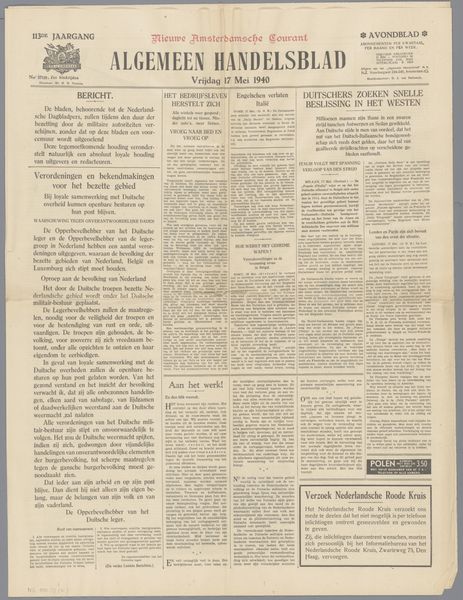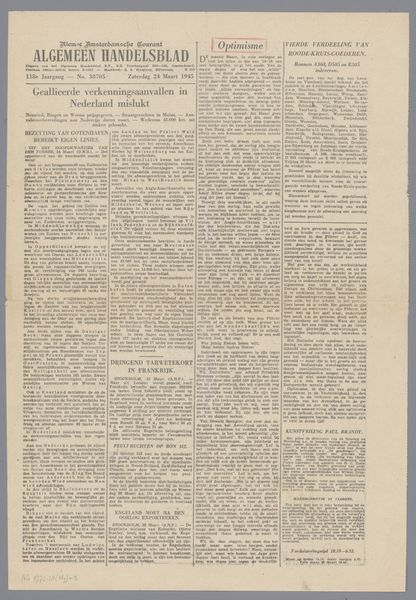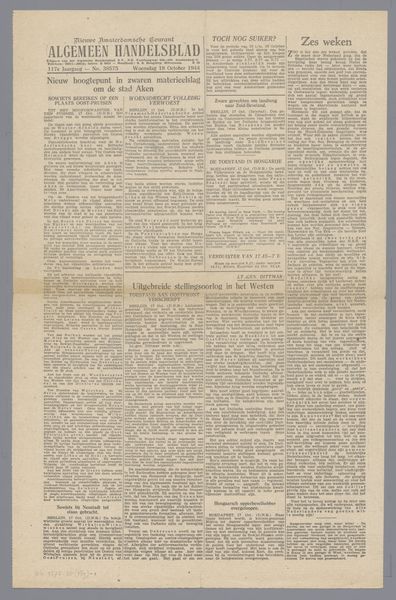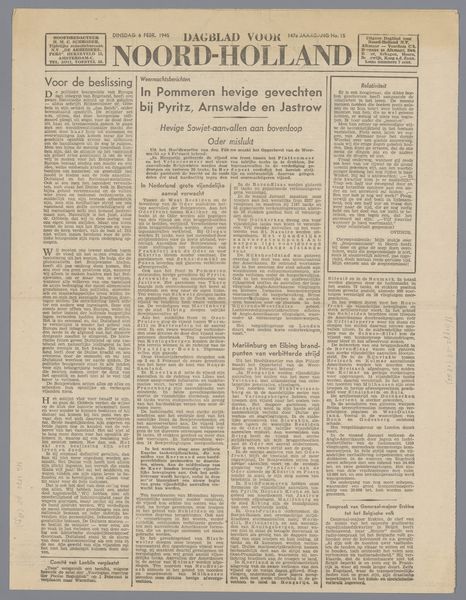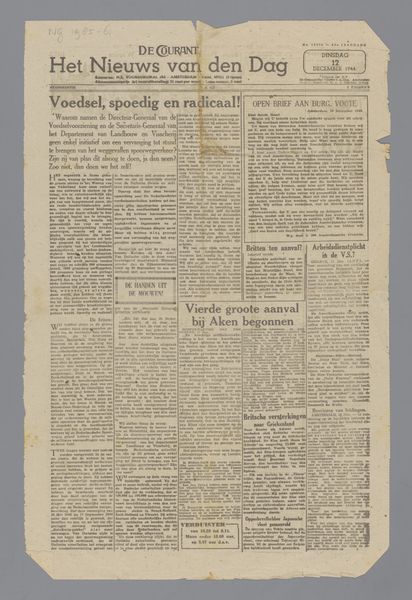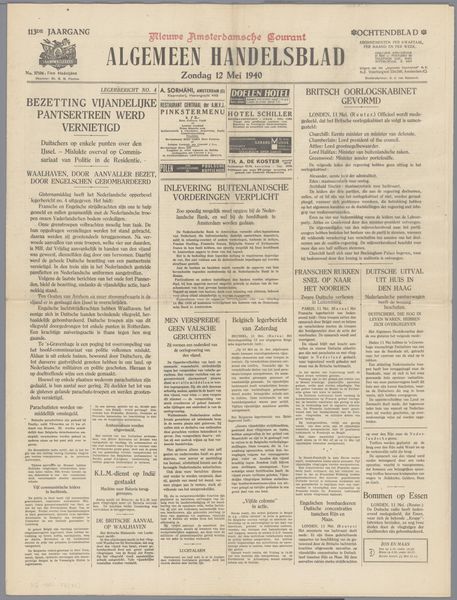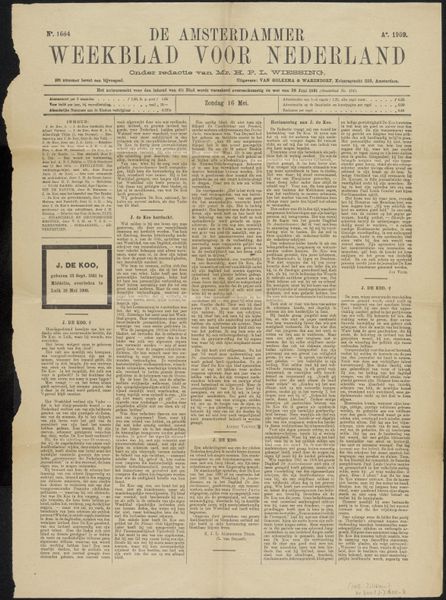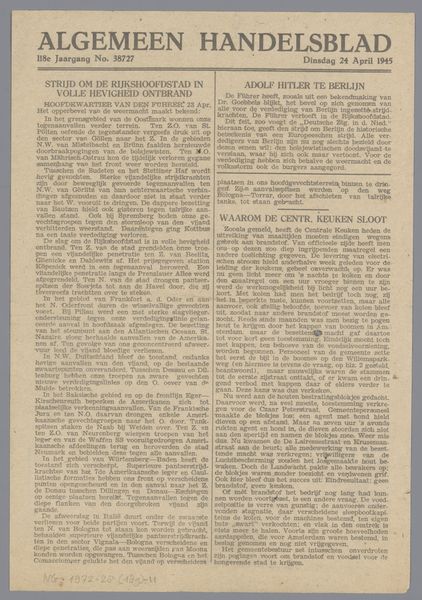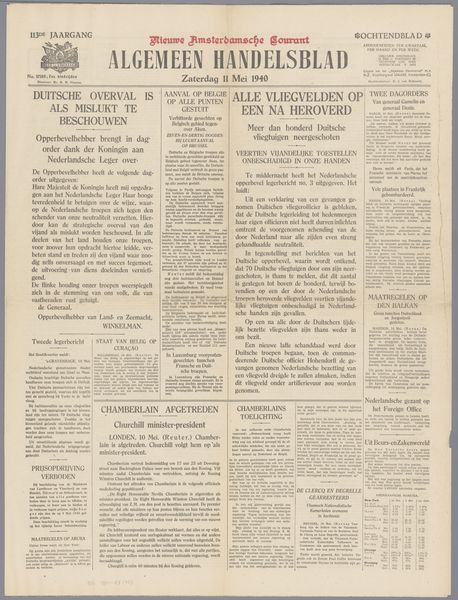
graphic-art, collage, print, textile, paper, typography
#
portrait
#
graphic-art
#
type repetition
#
aged paper
#
homemade paper
#
collage
# print
#
editorial typography
#
textile
#
paper
#
personal sketchbook
#
typography
#
journal
#
fading type
#
stylized text
#
thick font
#
history-painting
#
modernism
#
columned text
Dimensions: height 59.5 cm, width 44 cm
Copyright: Rijks Museum: Open Domain
Curator: This piece, "Nieuwe Rotterdamsche Courant," possibly created between 1940 and 1945, uses the newspaper medium itself to engage with history. At first glance, the density of text gives it an overwhelming feel. A wall of words. What do you make of its impact? Editor: The repetition, the sheer volume, evokes a sense of information overload, a world saturated with news and pronouncements. But look closer. There is definitely some graphic alteration; it is almost collage. Are the source newspapers all original, do we know about their paper stock, if the work has some kind of textile support...? The homemade paper, in particular, suggests a very immediate process of artmaking. Curator: Precisely. The work utilizes print, collage, and typography, blurring the lines between art and document. "Vrijdag 10 Mei 1940" is printed on the paper and Rotterdam suffered heavy bombing on 14 May, meaning this page dates to the onset of Nazi Germany's invasion and annexation of The Netherlands. That certainly must lend some added importance to the arrangement of these columns and articles. How do you interpret the recontextualization of these headlines in artistic form? Editor: I see echoes of a specific historical moment— a desperate attempt to preserve and reframe narratives amidst political turmoil and uncertainty. Words like "Labour" and references to "political malaise" resonate deeply. The density and style also remind us of the propaganda imagery of the era. Was the journal intended to represent some form of Dutch resistance? What significance can we attach to the arrangement of these columned words and headlines? It begs the question: How did the artist select and juxtapose these particular snippets of news? Curator: A crucial question. Examining the choices, from selecting "Nieuwe Rotterdamsche Courant" itself to arranging its components, tells us about the artist's process and their engagement with this historical period through art. Perhaps the meaning lies not in a single message but a constellation of concerns. Editor: I concur. Reflecting on this piece, I appreciate how the artist transmuted contemporary anxieties into a lasting, symbolic statement about truth, memory, and social commentary. Curator: For me, it’s a potent reminder that the materials and means of production can be just as important as the finished product when trying to analyze an artwork and its message.
Comments
No comments
Be the first to comment and join the conversation on the ultimate creative platform.


